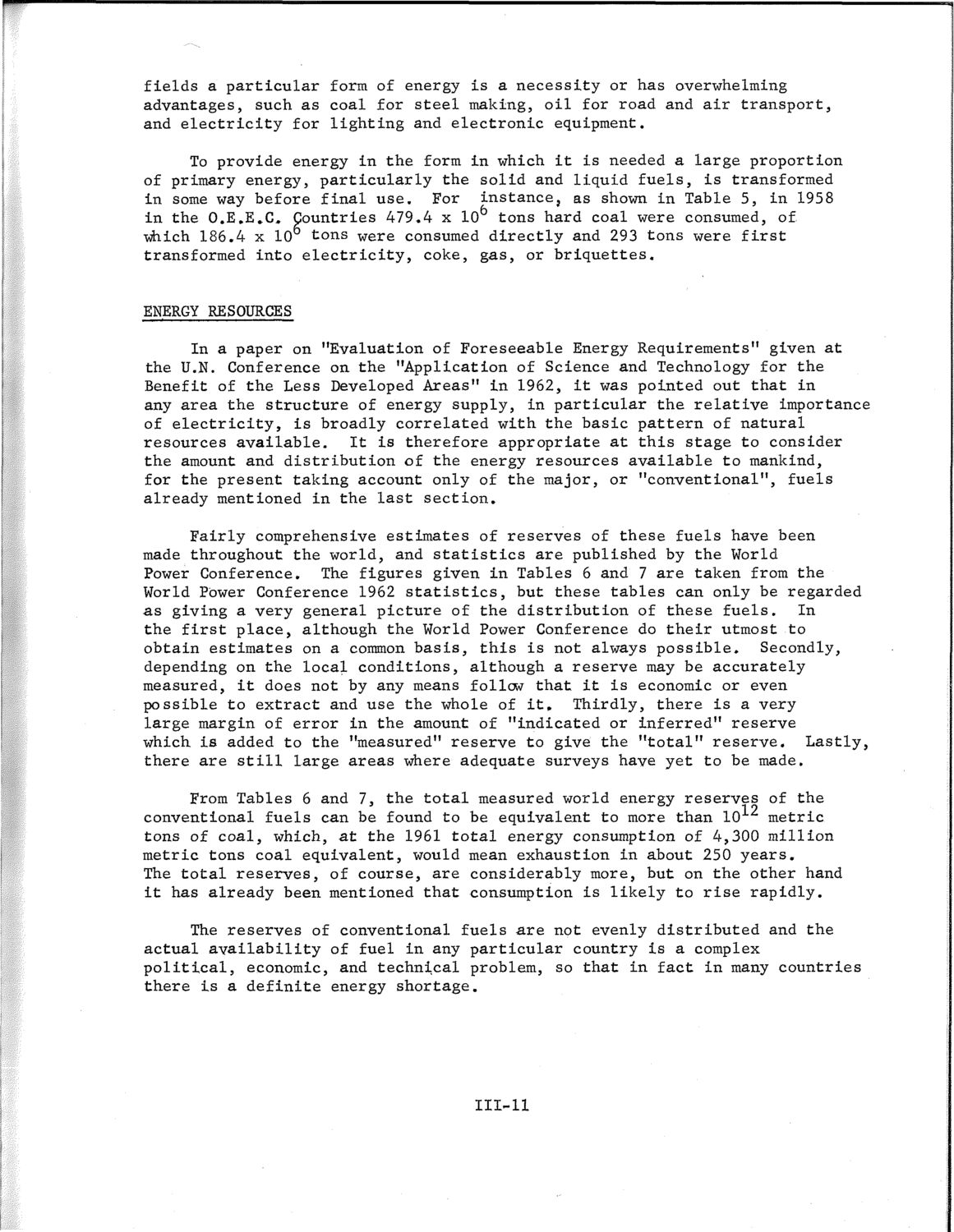| |
| |
Caption: SWE - Proceedings of the First International Conference of Women Engineers and Scientists
This is a reduced-resolution page image for fast online browsing.

EXTRACTED TEXT FROM PAGE:
fields a particular form of energy is a necessity or has overwhelming advantages, such as coal for steel making, oil for road and air transport, and electricity for lighting and electronic equipment. To provide energy in the form in which it is needed a large proportion of primary energy, particularly the solid and liquid fuels, is transformed in some way before final use. For instance, as shown in Table 5, in 1958 in the O.E.E.C, Countries 479.4 x 10 tons hard coal were consumed, of which 186.4 x 10 tons were consumed directly and 293 tons were first transformed into electricity, coke, gas, or briquettes. ENERGY RESOURCES In a paper on "Evaluation of Foreseeable Energy Requirements" given at the U.N. Conference on the "Application of Science and Technology for the Benefit of the Less Developed Areas" in 1962, it was pointed out that in any area the structure of energy supply, in particular the relative importance of electricity, is broadly correlated with the basic pattern of natural resources available. It is therefore appropriate at this stage to consider the amount and distribution of the energy resources available to mankind, for the present taking account only of the major, or "conventional", fuels already mentioned in the last section. Fairly comprehensive estimates of reserves of these fuels have been made throughout the world, and statistics are published by the World Power Conference. The figures given in Tables 6 and 7 are taken from the World Power Conference 1962 statistics, but these tables can only be regarded as giving a very general picture of the distribution of these fuels. In the first place, although the World Power Conference do their utmost to obtain estimates on a common basis, this is not always possible. Secondly, depending on the local conditions, although a reserve may be accurately measured, it does not by any means follow that it is economic or even possible to extract and use the whole of it. Thirdly, there is a very large margin of error in the amount of "indicated or inferred" reserve which is added to the "measured" reserve to give the "total" reserve. Lastly, there are still large areas where adequate surveys have yet to be made. From Tables 6 and 7, the total measured world energy reserves of the conventional fuels can be found to be equivalent to more than 1012 metric tons of coal, which, at the 1961 total energy consumption of 4,300 million metric tons coal equivalent, would mean exhaustion in about 250 years. The total reserves, of course, are considerably more, but on the other hand it has already been mentioned that consumption is likely to rise rapidly. The reserves of conventional fuels are not evenly distributed and the actual availability of fuel in any particular country is a complex political, economic, and technical problem, so that in fact in many countries there is a definite energy shortage. III-ll
| |